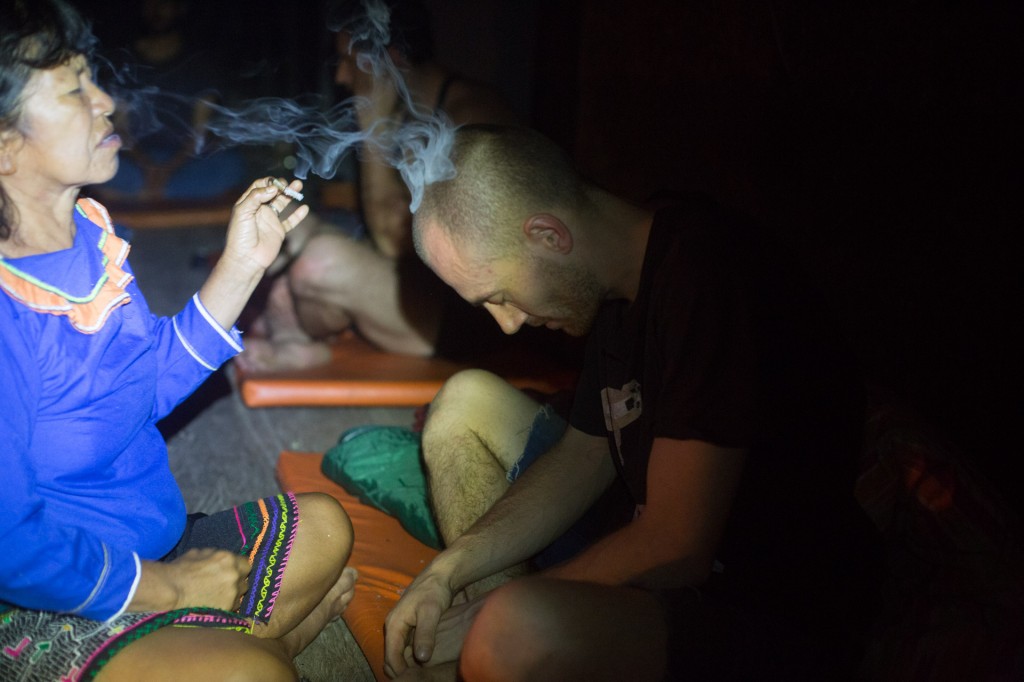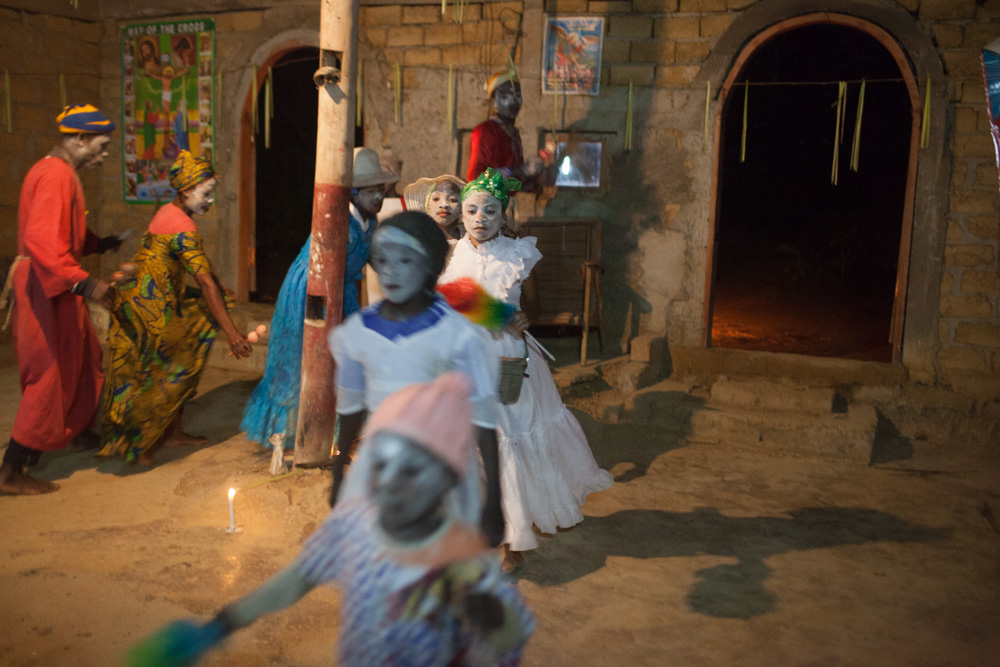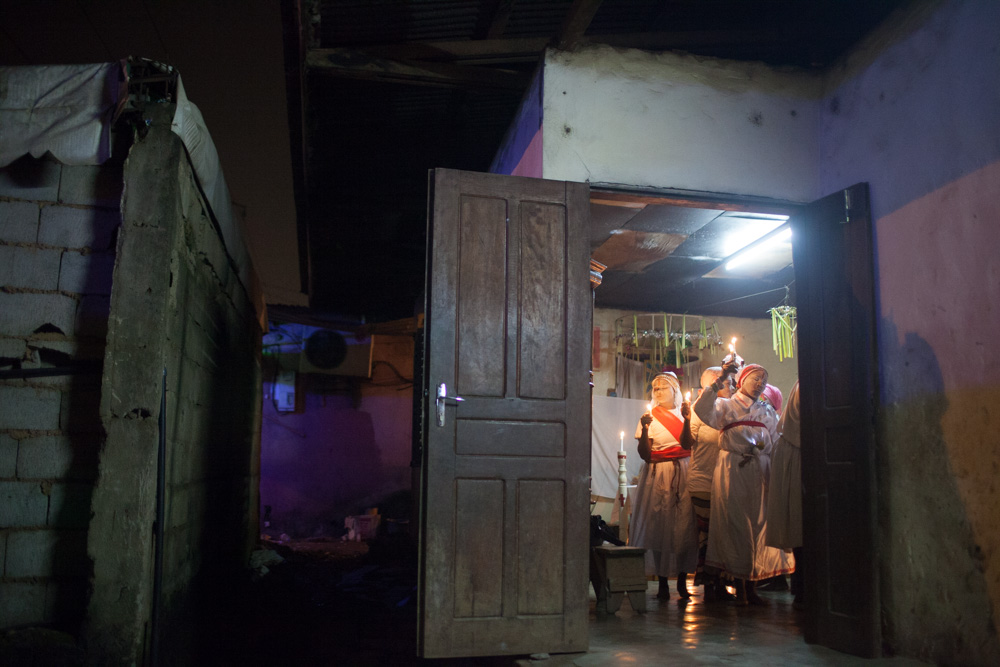So you are not afraid of Muslims or other illegal immigrants? Now it is the “objective and universal” threat of virus?
…
“Kochaj wszystko jakbyś miał to stracić”
A zatem, nie boisz się już nielegalnych muzułmańskich imigrantów? Teraz na pierwszym planie jest “obiektywne i uniwersalne zagrożenie” ze strony wirusa?
Fundamental teaching of psychedelic work is that fear is not related, not caused by the object of fear. The object serves for projection of something that has its own existence, can be fed or starved, can be projected at ever changing array of triggers – so you can never conquer it by removing the current “threat”. That is why those living on the edge of life threatening situations – free climbers, Afghan fighters, farmers of Third World where no subsidies exist – have less fear, even if their dangers are more real than for those from cushy developed countries, with their spectacular range of paranoias, anxieties, phobias, too long to list here, and constanly updated, with help of busy manufacturers from industrial and political spheres.
What does the psychedelic experience show then, again and again, what we see in our work with so many cases of anxiety among our guests/patients? That there is no other solution but calm acceptance – no radical denial and no clinging to this emotion. The more you desire objects of your fear to be removed, the more you become attached to dream of life under control, a life of certainty. Only through acceptance of opposite, unpredictable and uncertain, the path to the other pole of fear – that is love – can be opened and strengthened as one walks it more and more often.
This is neither virus that is your biggest enemy, nor the government imposing restrictive measures and new world order. It is that you allow them to distract you from present, into anxiety, that your attention is stolen. As long as you play that game, there will be always another threat around the corner, when you forget about Muslims it will be virus, when you forget about the virus, it will be economy crisis, germs, your personal development not good enough, your retirement not secure enough, your book not good enough, your child, pedophiles, correct diet, you name it, and naming it you can and are master at.
The good news : the more that tensions rises, the more likely we will be to finally release the illusion of control and surrender. While you still can avoid your Muslim neighbour, it may not be so easy with invisible threat. Well, then you stand in front of the choice – do you want your life, NOW ( don’t believe what they promise, that after we win this battle, you can then rest ), to be the constant feeling of terror, or you will realize that the terrorist is in you? No buts, no “what if your mother”. These are his disguises, and you are facing AI most perfectly and continually adjusted to your weaknesses. To win, you should not try harder, you should try less.
…
Podstawowa nauka jaka płynie z pracy z psychodelicznymi substancjami dotyczy strachu i tego, że nie jest on związany, czy też generowany przez jego obiekt. Ten obiekt, pozorne źródło, w istocie służy projekcji czegoś, co ma swoją własną egzystencję, może być karmione lub zagłodzone, może być projektowane na wiecznie zmieniającą się selekcję pretekstów – więc nigdy nie da się pokonać poprzez usunięcie aktualnego “zagrożenia”. To dlatego ci żyjący na krawędzi, w obliczu zagrożenia egzystencji – wspinacze, afgańscy bojownicy, farmerzy Trzeciego Świata gdzie nie ma dotacji i ubezpieczeń – w większości mają mniej strachu, nawet jeśli ich zagrożenia są bardziej realne niż te w rozmiękczonych, bogatych społeczeństwach, z ich spektakularnym wyborem paranoi, nerwicy, fobii, zbyt długim by go tu wyliczać, i wciąż aktualizowanym, z pomocą zapracowanych producentów z komercyjnego i politycznego świata.
Co psychodeliczne doświadczenie zatem pokazuje, raz za razem, co widzimy podczas naszej pracy z tyloma przypadkami nerwicy u naszych gości / pacjentów? To, że nie ma innego skutecznego rozwiązania niż spokojna akceptacja, ani radykalne wyparcie, ani podążanie za tą emocją. Im bardziej żądasz by usunięto obiekt twojego strachu, tym bardziej przywiązujesz się do snu o życiu pod kontrolą, życiu w pewności. Tylko poprzez akceptację przeciwnego, nieprzewidywalności i niepewności, ścieżka na drugi biegun strachu, jakim jest miłość, może otworzyć się i wzmocnić, w miarę jak nią po raz kolejny podążamy.
To nie wirus jest twym największym wrogiem, ani rządy narzucające absurdalne restrykcje i nowy porządek świata. Problemem jest to, że pozwalasz im odciągnąć się od chwili obecnej, od OBECNOŚCI, w niepokój, twoja uwaga zostaje ukradziona. Tak długo jak grasz w tą grę, zawsze będzie za zakrętem następne zagrożenie, kiedy zapomnisz o krwiożerczych muzułmanach, to będzie wirus, kiedy przyzwyczaisz się do wirusa, czeka kryzys ekonomii, bakterie, nie dość skuteczny rozwój osobisty, nie dość pewna emerytura, nie dość dobra książka jaką piszesz, nieidealne dziecko, pedofile, właściwa dieta, nazwij to sam, a potrafisz to doskonale.
Dobre wieści : im bardziej wzrasta napięcie, ta światowa manifestacja indywidualnego niepokoju zagubionych jednostek, tym bardziej prawdopodobne, że przebudzenie będzie bardziej niezbędne, upuszczenie nieznośnego brzemienia kontroli stanie się jedynym jasnym wyjściem. Podczas gdy jeszcze jesteś w stanie jeszcze jakoś unikać orientalnych kolesi z brodą, nie będzie to już możliwe w wypadku “niewidzialnego zagrożenia”. Stoisz teraz przed wyborem – czy chcesz by twoje życie, TERAZ ( nie wierz już w te bajkę, że jak się jeszcze trochę pomęczysz i wygramy aktualną bitwę, to będziesz miał spokój ) było niekończącym się uczuciem przerażenia, czy też w końcu ujrzysz terrorystę w swoim wnętrzu? Żadnych “ale”, żadnych “a co gdyby twoja matka”. To są jego maski, a mierzysz się z inteligencją najdoskonalej dopasowaną do twoich słabości – twoją inteligencją. Aby wygrać, nie powinieneś starać się jeszcze mocniej, powinieneś spróbować odpuścić, starać się mniej.








